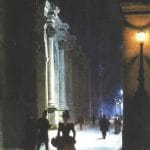
Imagine walking into a museum, expecting to see a world-renowned masterpiece, only to find an empty frame. What happened? The world of art theft is filled with such moments, where history’s most prized creations vanish in the blink of an eye. These heists aren’t just about the money; they’re imbued with mystery, intrigue, and often a dash of Hollywood-like drama. Art theft, despite being a crime, has a certain allure that captivates the imagination, leaving us wondering who could orchestrate such daring acts and why these masterpieces remain hidden.
Over the years, art theft has become a recurring theme in history, with some of the most famous pieces disappearing under mysterious circumstances. From paintings by Vermeer to the iconic Mona Lisa, the loss of these works has left significant gaps in our cultural heritage. The sheer audacity of the thieves and the often meticulous planning involved add layers of fascination. Moreover, the unresolved nature of many of these cases continues to fuel public interest and speculation.
This article will explore some of the most infamous art thefts in history, delving into the details of these heists and the enduring mysteries that surround them. We will look at the cunning plans, the aftermath, and the ongoing investigations that keep these stories alive. Additionally, we’ll examine the impact of these thefts on the art world, both economically and culturally, highlighting the importance of preserving our artistic heritage.
From the infamous Gardner Museum heist to the unresolved Van Gogh Museum theft, each case reveals a unique story of crime and mystery. Through these narratives, we gain insight into the dark world of art theft and the relentless pursuit to recover these irreplaceable treasures. Join us as we uncover the tales behind these legendary heists and ponder the unresolved questions that continue to baffle investigators and art lovers alike.
The Gardner Museum Heist
On March 18, 1990, the Isabella Stewart Gardner Museum in Boston became the scene of one of the most audacious art heists in history. In the early hours of the morning, two men dressed as police officers gained entry into the museum. They handcuffed the guards and spent 81 minutes looting the gallery. Among the thirteen stolen works were Vermeer’s “The Concert” and Rembrandt’s “Storm on the Sea of Galilee,” masterpieces that remain missing to this day.
The heist was meticulously planned, indicating that the thieves had a deep understanding of the museum’s security system. They bypassed motion detectors and carefully chose specific pieces, suggesting they had inside information or had thoroughly researched the museum. Despite the FBI’s efforts, including a $10 million reward for information leading to the recovery of the artwork, the case remains unsolved. The empty frames still hang in the museum as a poignant reminder of what was lost.
The aftermath of the heist saw an extensive investigation that spanned decades. Numerous theories have emerged over the years, ranging from connections to organized crime to possible insider involvement. However, despite various leads and suspects, no arrests have been made, and the stolen artworks have not been recovered. The mystery of who orchestrated the heist and where the artworks are hidden continues to captivate the public and investigators alike.
The impact of the Gardner heist extends beyond the loss of invaluable art. It highlighted significant vulnerabilities in museum security and led to widespread changes in how institutions protect their collections. For the Gardner Museum, the theft was a devastating blow, but it also brought renewed attention and visitors hoping to glimpse the notorious empty frames. The unresolved nature of the heist ensures it remains a topic of fascination and speculation, a real-life art mystery that continues to unfold.
The Mona Lisa Theft
The theft of the Mona Lisa from the Louvre Museum in Paris on August 21, 1911, is one of the most famous art heists in history. The painting, by Leonardo da Vinci, was already a renowned masterpiece, but its disappearance catapulted it into global celebrity. Vincenzo Peruggia, an Italian handyman who had worked at the museum, was the mastermind behind the theft. His motive was a misguided belief that the painting belonged in Italy and not France.
Peruggia’s theft was surprisingly straightforward. He hid inside the museum overnight and simply walked out with the painting concealed under his clothes. The theft went unnoticed for hours, giving Peruggia ample time to escape. When the news broke, it caused a sensation. The media frenzy was unprecedented, with newspapers around the world covering the story. The Mona Lisa’s fame grew exponentially during this period, becoming a symbol of both artistic beauty and human intrigue.
The painting remained missing for over two years. Peruggia kept it hidden in his apartment in Paris, but his attempt to sell it to an art dealer in Florence led to his capture. The Mona Lisa was recovered and returned to the Louvre in 1913, and Peruggia was tried and imprisoned. His trial revealed his nationalist motivations, but the simplicity of his plan and the ease with which he executed it shocked the art world. The Mona Lisa returned to the Louvre amid great fanfare, more famous than ever before.
The Mona Lisa theft underscored the importance of art security and the vulnerabilities even in the most prestigious institutions. It also highlighted how art theft could elevate the status of a painting, turning it into a cultural icon. The theft and recovery of the Mona Lisa remain a fascinating chapter in art history, illustrating how a single act can transform a work of art’s place in the public consciousness. Today, the Mona Lisa continues to draw millions of visitors, partly due to the intrigue surrounding its dramatic theft and recovery.
The Scream Heists
Edvard Munch’s “The Scream” has been the target of multiple thefts, adding to the painting’s mythos and mystique. The first notable theft occurred in 1994 during the Winter Olympics in Lillehammer, Norway. Thieves broke into the National Gallery in Oslo and took the painting, leaving a note that read, “Thanks for the poor security.” This brazen act was timed to draw maximum attention, capitalizing on the global spotlight on Norway at the time.
The painting was recovered a few months later in a sting operation. Despite the successful recovery, the incident exposed significant flaws in the museum’s security measures. Fast forward to 2004, and “The Scream” was stolen again, this time from the Munch Museum in Oslo. Armed robbers stormed the museum in broad daylight, taking both “The Scream” and another Munch painting, “Madonna,” in a heist that shocked the world.
The 2004 theft led to a frantic investigation and widespread media coverage. The paintings were recovered two years later, though they had suffered some damage. The heist underscored the ongoing challenges museums face in protecting valuable art. Despite the recovery, the emotional and cultural impact of the thefts lingered. For Munch’s “The Scream,” the repeated thefts only added to its status as an iconic representation of modern anxiety and existential dread.
These heists have cemented “The Scream” as one of the most infamous and resilient works of art in history. The repeated targeting of the painting highlights the allure and value that certain artworks hold for criminals. The high-profile nature of the thefts also prompted museums worldwide to reassess and upgrade their security protocols. Today, “The Scream” is not only a masterpiece of art but also a testament to the enduring human fascination with crime and mystery.
The Antwerp Diamond Heist
The Antwerp Diamond Heist, often dubbed “the heist of the century,” occurred over the weekend of February 15-16, 2003, at the Antwerp Diamond Center in Belgium. The loot included diamonds, gold, and other jewels worth over $100 million. This heist was not only about the staggering value of the stolen goods but also the sheer audacity and meticulous planning involved. Leonardo Notarbartolo, an Italian mastermind, led the gang behind this legendary theft.
The thieves rented an office in the Diamond Center, allowing them to gain insider knowledge and access. Over several months, they meticulously planned the heist, bypassing state-of-the-art security systems, including infrared heat detectors, a seismic sensor, a magnetic field, and a locked steel door. On the night of the heist, they executed their plan flawlessly, emptying 123 out of 160 safe deposit boxes. The crime was discovered on Monday morning, leaving authorities and the world in shock.
Despite the sophistication of the heist, the investigation eventually led to the arrest of Notarbartolo and some of his accomplices. However, the majority of the stolen goods were never recovered, adding an enduring layer of mystery to the heist. The precise details of how the thieves bypassed some of the security measures remain unknown, fueling speculation and intrigue. The heist exposed vulnerabilities in what was considered an impregnable fortress, leading to significant changes in security protocols within the diamond industry.
The Antwerp Diamond Heist is a prime example of how art and valuables theft can combine elements of high-stakes drama and real-world impact. The loss was a significant blow to the victims, both financially and emotionally. For the public, it highlighted the thin line between reality and fiction, as the heist seemed to come straight out of a Hollywood movie. The story of the Antwerp Diamond Heist continues to fascinate, embodying the perfect blend of daring, ingenuity, and mystery.
The Still Unsolved: The Van Gogh Museum Heist
On December 7, 2002, the Van Gogh Museum in Amsterdam was the target of a daring heist. Two paintings by Vincent van Gogh, “View of the Sea at Scheveningen” and “Congregation Leaving the Reformed Church in Nuenen,” were stolen in a matter of minutes. The thieves used a ladder to climb onto the roof, broke a window, and made their escape before the police could respond. Despite immediate efforts to track down the culprits and recover the paintings, the case went cold.
The heist was a significant blow to the museum and the art world, as both paintings were considered important works by Van Gogh. The immediate investigation involved extensive forensic analysis and international cooperation, but leads quickly dried up. For years, the whereabouts of the paintings remained unknown, and the case was a stark reminder of the vulnerability of even the most secure institutions.
In 2016, a breakthrough occurred when Italian authorities recovered the stolen paintings during a raid on a mafia group involved in drug trafficking. The paintings were found in relatively good condition, despite having been missing for nearly 14 years. This recovery was a significant triumph, but it also highlighted the connections between art theft and organized crime. The paintings were eventually returned to the Van Gogh Museum, where they were greeted with great fanfare and relief.
The Van Gogh Museum heist underscores the enduring challenge of protecting cultural heritage from theft. Even with modern security measures, determined thieves can still find ways to exploit weaknesses. The recovery of the Van Gogh paintings was a rare success story in the world of art theft, but many stolen artworks remain missing. The ongoing efforts to combat art theft and recover lost treasures continue to be a crucial aspect of preserving our cultural legacy.
Art Theft in the Digital Age
The advent of the digital age has introduced new threats to the art world, including cyber heists and digital art theft. As more artworks and transactions move online, the potential for digital theft has increased. Hackers can now target digital records, manipulate provenance information, and even steal digital art itself. Recent cases have shown that no institution is entirely safe from cyber threats, highlighting the need for robust digital security measures.
One notable case involved the hacking of an online art auction house, where hackers manipulated bid information and redirected payments to their accounts. This incident resulted in significant financial losses and damaged the credibility of the auction house. The digital nature of the heist made it challenging to track down the perpetrators, showcasing the complexities of modern art theft. As the art world becomes more digitized, the methods used by thieves are also evolving, requiring constant vigilance.
To counter these threats, the art industry is turning to advanced technologies such as blockchain and digital authentication. Blockchain provides a secure and transparent way to track the provenance of artworks, making it harder for thieves to sell stolen art. Digital authentication tools can verify the legitimacy of online transactions and artworks, adding an extra layer of security. These technologies represent a significant step forward in protecting digital art and preventing cyber heists.
Despite these advances, the battle against digital art theft is ongoing. As technology evolves, so do the tactics of cybercriminals. The art world must remain proactive in developing and implementing security measures to stay ahead of potential threats. The intersection of art and technology offers exciting possibilities but also presents new challenges. Ensuring the safety and integrity of digital art requires a collective effort from artists, institutions, and technology experts.
The Impact of Art Theft
Art theft has far-reaching consequences, impacting not only the financial aspect but also the cultural and emotional dimensions of art. Economically, the loss of valuable artworks can be devastating for museums and private collectors. The financial value of stolen art often runs into millions of dollars, affecting insurance costs and recovery expenses. Moreover, the black market for stolen art fuels other criminal activities, creating a ripple effect in the criminal underworld.
Culturally, the theft of art represents a significant loss to society. Masterpieces are not just valuable commodities; they are windows into our history and collective human experience. When these works are stolen, the public is deprived of the opportunity to engage with and learn from them. The emotional impact on the community and the art world can be profound, as these works often hold deep personal and cultural significance.
Efforts to recover stolen art are ongoing, with many success stories but also numerous challenges. Restitution and repatriation efforts seek to return stolen art to its rightful owners, addressing historical injustices and legal complexities. However, the process can be lengthy and fraught with obstacles. Notable successes, such as the recovery of art looted by National Socialists, highlight the importance of these efforts, but much work remains to be done.
The fight against art theft is a continuous struggle that requires international cooperation, technological innovation, and public awareness. As we work to protect our cultural heritage, it is crucial to support measures that prevent theft and facilitate recovery. The stories of stolen art and the efforts to reclaim it remind us of the value of these cultural treasures and the need to preserve them for future generations. Art theft may continue to pose challenges, but our commitment to safeguarding our heritage remains unwavering.
Conclusion
In exploring the most infamous art thefts and unresolved mysteries, we uncover a world filled with intrigue, daring, and enduring questions. From the brazen heist at the Gardner Museum to the repeated targeting of Munch’s “The Scream,” these stories captivate our imagination and highlight the lengths to which individuals will go to possess art. The unresolved nature of many of these cases keeps them in the public eye, fueling speculation and ongoing investigations.
These heists have far-reaching impacts, both economically and culturally. They expose vulnerabilities in even the most secure institutions and underscore the importance of protecting our cultural heritage. The digital age has introduced new challenges, but also new tools for combating art theft. As we continue to adapt and evolve, the lessons learned from these infamous heists guide our efforts to secure and preserve art.
Reflecting on these stories, we are reminded of the enduring allure of art and the lengths to which people will go to possess it. The mysteries that remain unsolved keep the art world vigilant and engaged, continually seeking to recover lost masterpieces and prevent future thefts. The pursuit of these treasures is a testament to the value we place on art and its irreplaceable role in our lives.
In closing, let’s stay curious and vigilant, supporting efforts to recover stolen art and protect our cultural heritage. Share your thoughts and favorite art heist stories in the comments, and stay tuned for more intriguing tales from the art world. Together, we can appreciate the beauty and mystery of art while working to safeguard it for generations to come.


